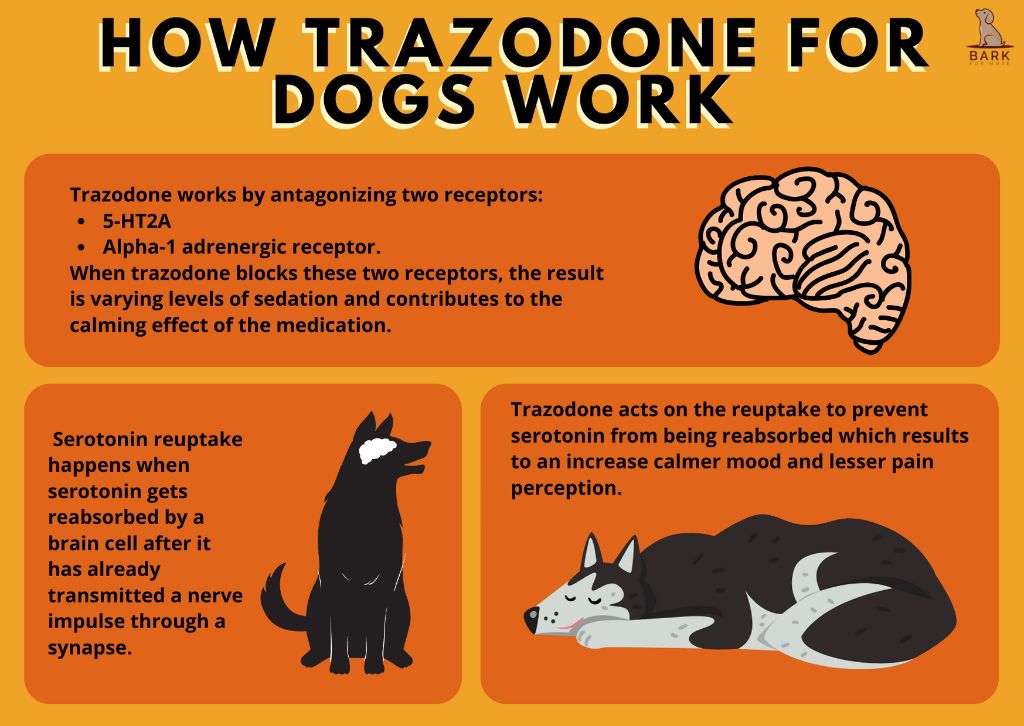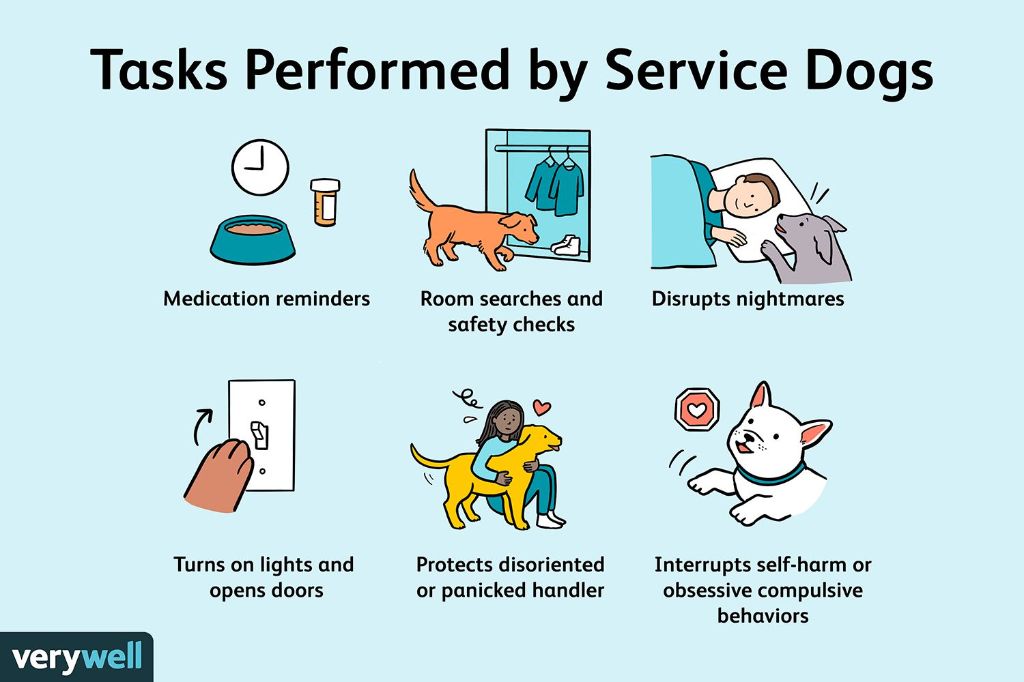Introduction
Dogs can experience anxiety just like humans. Trazodone is a medication that is commonly prescribed by veterinarians to treat anxiety in dogs. But is it safe for dogs to take trazodone twice a day? This article will provide an overview of trazodone, explain why it’s used in dogs, discuss proper dosing frequency, and outline potential side effects. We’ll also look at alternative options and lifestyle changes to help an anxious dog find calm. Understanding the safe and effective use of trazodone can help dog owners make informed decisions about managing their pet’s anxiety.
Citations:
[1] https://vcahospitals.com/know-your-pet/trazodone
[2] https://www.akc.org/expert-advice/health/trazodone-for-dogs/
What is Trazodone?
Trazodone is an antidepressant drug that is sometimes prescribed for dogs. It is classified as a serotonin antagonist and reuptake inhibitor (SARI) and works by increasing serotonin activity in the brain (Mayo Clinic). In humans, trazodone is used to treat major depressive disorder. However, in dogs it is more commonly prescribed for anxiety and behavioral issues.
Trazodone has a sedative effect and can help dogs relax and fall asleep. It is often prescribed for dogs that struggle with separation anxiety, noise phobias, and other behavioral problems. The calming effects of trazodone can reduce anxiety and prevent associated destructive behaviors in dogs (WebMD).
While trazodone is not FDA approved for veterinary use, it is commonly prescribed by vets for “off-label” use in dogs. It provides an alternative to other sedatives with less risk of disinhibition and fewer cardiovascular effects (MedlinePlus). Under the guidance of a veterinarian, trazodone can be a helpful tool for managing anxiety and behavior problems in dogs.
Why Trazodone is Prescribed for Dogs
Trazodone is commonly prescribed for dogs to treat behavioral conditions such as anxiety, phobias, and aggression (VCA Hospitals). It can help reduce anxiety and accompanying behavioral problems like inappropriate urination, excessive barking, and destructive behaviors. Trazodone may allow dogs to better tolerate stressors that provoke these behaviors.
Trazodone is also sometimes prescribed for dogs who have difficulty sleeping or insomnia (AKC). The medication has a sedating effect which can help induce sleep in dogs struggling with insomnia or restless sleep. By promoting more restful sleep, it may improve overall anxiety levels and daytime behavior as well.
Overall, vets may prescribe trazodone for dogs with anxiety disorders, phobias like separation anxiety or noise phobia, aggression issues, and sleep disorders like insomnia. It helps treat the underlying behavioral causes of these conditions in dogs.
Trazodone Dosage for Dogs

The typical starting dose of trazodone for dogs is 3.5-5 mg per pound (7-10 mg/kg) of body weight administered 1-2 times per day, according to veterinarians. This dose may be gradually increased or decreased until the optimal dosage is reached based on your dog’s individual response and needs. The maximum daily dose is around 20 mg/kg or 10 mg/lb.
For small dogs under 22 lbs, the starting dose is often 25-50 mg per dose given once or twice daily. Medium dogs from 22-44 lbs can start at 50-100 mg per dose. Large dogs over 44 lbs can start at 100-150 mg per dose once or twice a day. For giant breed dogs over 100 lbs, the starting dose may be increased to 200-300 mg per dose. The frequency is often once daily, but some vets prescribe it twice daily especially when starting treatment.
Your vet will determine the ideal maintenance dosage for your dog based on their response to the medication over the first few weeks. The dose may be adjusted up or down to achieve the desired therapeutic effects while minimizing side effects. Be sure to follow your vet’s dosage instructions and monitor your dog closely when first starting trazodone. Consult your vet if you have any concerns about unusual reactions.
Sources:
https://www.drugs.com/medical-answers/trazodone-given-dogs-3574017/
Is Twice a Day Dosing Safe?
Twice daily dosing of trazodone for dogs can be safe and effective when prescribed and monitored by a veterinarian. Some key considerations around twice daily dosing include:

Pros:
- Can provide more consistent therapeutic effects throughout the day.
- Prevents blood levels from dropping too low between doses.
- May allow a lower dose to be effective when split between two doses.
Cons:
- Increases the risk of overdose if doses are doubled up.
- Requires more frequent handling/pilling of the dog.
- May be inconvenient for owners’ schedules.
Veterinarian guidance is essential when using trazodone twice daily. The dosage for each dose needs to be properly calculated and monitored. Bloodwork may be recommended to check for side effects. Veterinarians typically start with once daily dosing and only increase to twice daily as needed to control symptoms. Twice daily dosing allows the dose per administration to be lowered while maintaining a therapeutic effect.
Overall, twice daily trazodone can be appropriate and safe when veterinarian prescribed and monitored. It provides more even coverage but requires diligent administration and monitoring for side effects. Dogs on twice daily trazodone should be evaluated regularly to ensure the dosage and frequency is optimal.
Potential Side Effects
Some of the common side effects of trazodone reported in dogs include sedation, vomiting, and diarrhea.
Trazodone in Dogs: Benefits and Potential Risks reports that in a study of 104 dogs experiencing adverse effects from trazodone, sedation and lethargy were seen in 43% of the dogs. Vomiting was reported in 14% of the dogs in the study.
Trazodone for Dogs: How It Can Help Your Pup’s Anxiety notes that potential side effects of trazodone in dogs include sedation/drowsiness, vomiting, and diarrhea. The sedative effects can lead to lethargy in some dogs.
If these side effects are mild, a veterinarian may recommend continuing the medication while monitoring the dog. However, if side effects are severe or don’t resolve on their own within a few days, a veterinarian may adjust the dosage or prescribe a different medication instead of trazodone. It’s important for pet owners to closely observe their dog’s reaction and alert the veterinarian to any concerning side effects.
Signs of Trazodone Overdose
Trazodone overdoses can cause severe and even fatal side effects in dogs. Some of the most common signs of overdose include:
- Vomiting
- Diarrhea
- Lethargy
- Weakness
- Collapse
- Low heart rate
- Low blood pressure
- Dilated pupils
- Disorientation
- Seizures
Collapse and low heart rate are two of the most serious effects of a trazodone overdose. Collapse indicates a dangerous drop in blood pressure that prevents sufficient blood flow to the brain and other vital organs. Bradycardia or a slow heart rate below 60 beats per minute can also be life-threatening if left untreated.
According to the ASPCA Animal Poison Control Center, doses of trazodone at 5 mg/kg or higher can cause toxic effects in dogs not accustomed to the medication. However, some dogs may show adverse reactions at even lower doses. That’s why it’s critical to follow your veterinarian’s dosage instructions carefully and monitor for any concerning symptoms after starting trazodone.
Alternatives to Trazodone

While trazodone can be an effective treatment for anxiety in dogs, there are some alternatives to consider that don’t involve medication. Two common alternatives are training and other medications.
Behavioral training is an excellent way to help curb anxiety and may make medication unnecessary. Working with a certified professional dog trainer or behaviorist using positive reinforcement techniques can help anxious dogs learn coping mechanisms. Desensitization and counterconditioning are commonly used to change a dog’s emotional response and teach relaxation skills.
There are also some other medications that can be tried as an alternative to trazodone if deemed appropriate by your veterinarian. Some options include:
– Fluoxetine (trade name Prozac) – This selective serotonin reuptake inhibitor (SSRI) antidepressant can help with anxiety and compulsive behaviors (Source).
– Benzodiazepines – Drugs like alprazolam relieve anxiety quickly by enhancing the effect of GABA neurotransmitters in the brain, but they can cause sedation (Source).
– Natural supplements – Some calming supplements for dogs like melatonin or CBD oil may provide mild anti-anxiety effects without sedation (Source).
Your veterinarian can discuss if other medication may be suitable for your dog’s needs.
Lifestyle Changes
Making some simple changes to your dog’s lifestyle can help improve their behavior naturally without the need for medication like trazodone. Focusing on areas like exercise, diet, and environment can make a big difference.
Getting adequate exercise is crucial for any dog. Dogs that don’t get enough physical activity and mental stimulation can become restless, anxious, and even aggressive. Aim for at least 30-60 minutes of activity per day through walks, playing fetch, or engaging with puzzle toys. This will help your dog burn off excess energy and keep them calm. Physical exercise is a natural stress reliever.

Diet can directly impact your dog’s behavior. Feed them a high-quality diet rich in omega fatty acids, with limited preservatives or artificial ingredients. Avoid sugar, which can cause hyperactivity. If your dog has food allergies or sensitivities, they may act out, so speak to your vet about special diets or supplements to support healthy digestion. What your dog eats affects their energy, mood, and focus. A raw or minimally processed diet can work wonders.
Your dog’s overall environment also matters. Make sure they have a comfortable, stimulating space indoors and access to nature outdoors. Introduce calming stimuli like soft music, fragrances like lavender, or adaptil pheromones. Minimize loud noises, clutter, or chaos that causes stress. Maintaining consistency with routines and schedules is also key. The right setting reduces behavioral issues.
Conclusion
In summary, trazodone can be a helpful medication for dogs suffering from anxiety or behavioral issues when used responsibly under veterinary guidance. The typical dosage is 3-8 mg per pound given 1-2 times daily, but this should be adjusted based on your dog’s individual needs and monitored closely for side effects.
While generally safe when used as directed, trazodone does carry potential side effects like lethargy and gastrointestinal upset. Overdoses can be very dangerous and even fatal. For these reasons, it’s critical to follow your vet’s dosage instructions exactly and never administer trazodone to your dog more often than prescribed.
If your dog struggles with trazodone side effects or needs more robust treatment, discuss alternatives like SSRIs, melatonin, pheromones, or behavioral modification with your veterinarian. With the right treatment plan, support, and a little patience, most dogs can overcome anxiety issues and thrive.
The bottom line is trazodone can help, but work closely with your vet and monitor your dog any time new medications are introduced. This will help keep your pup happy and healthy.